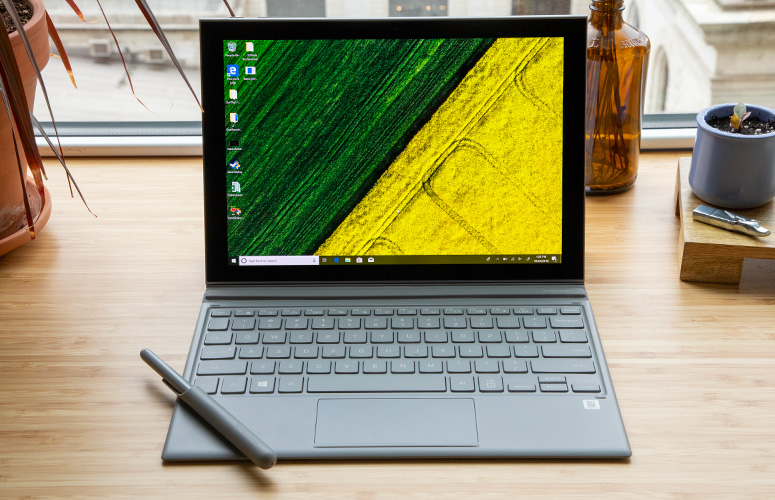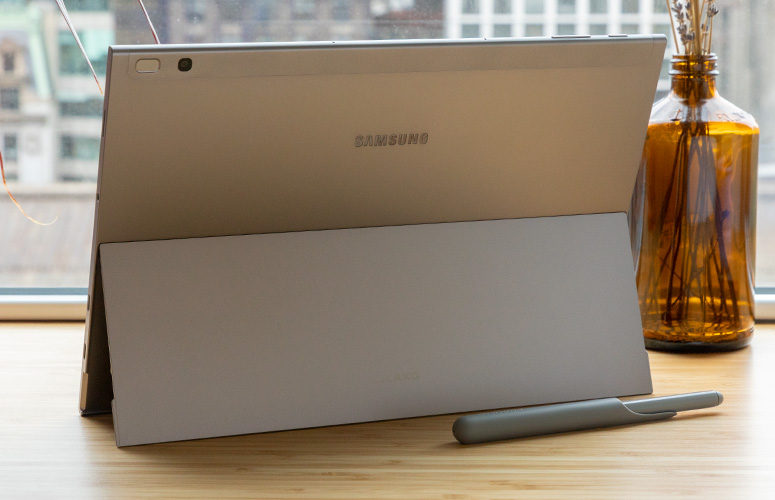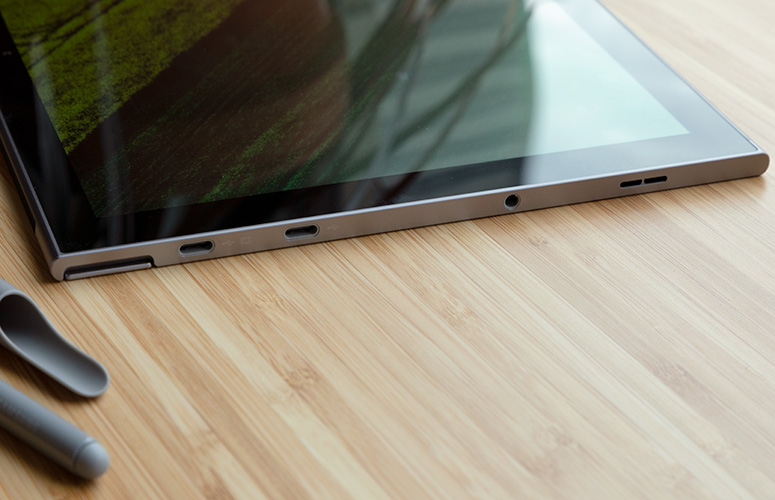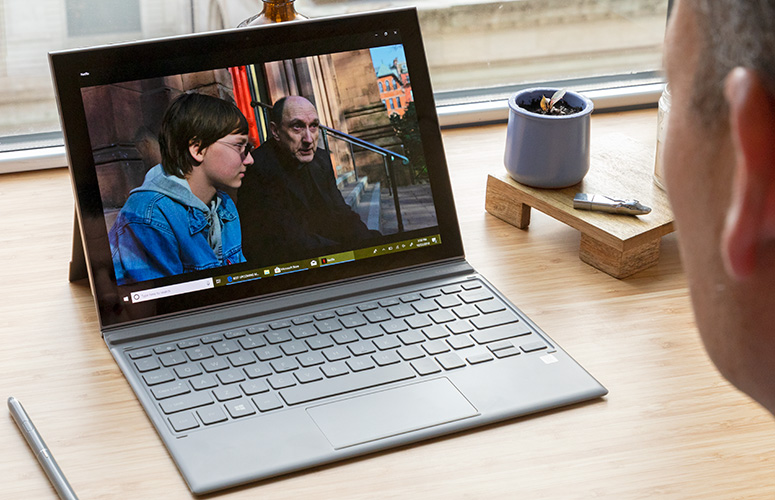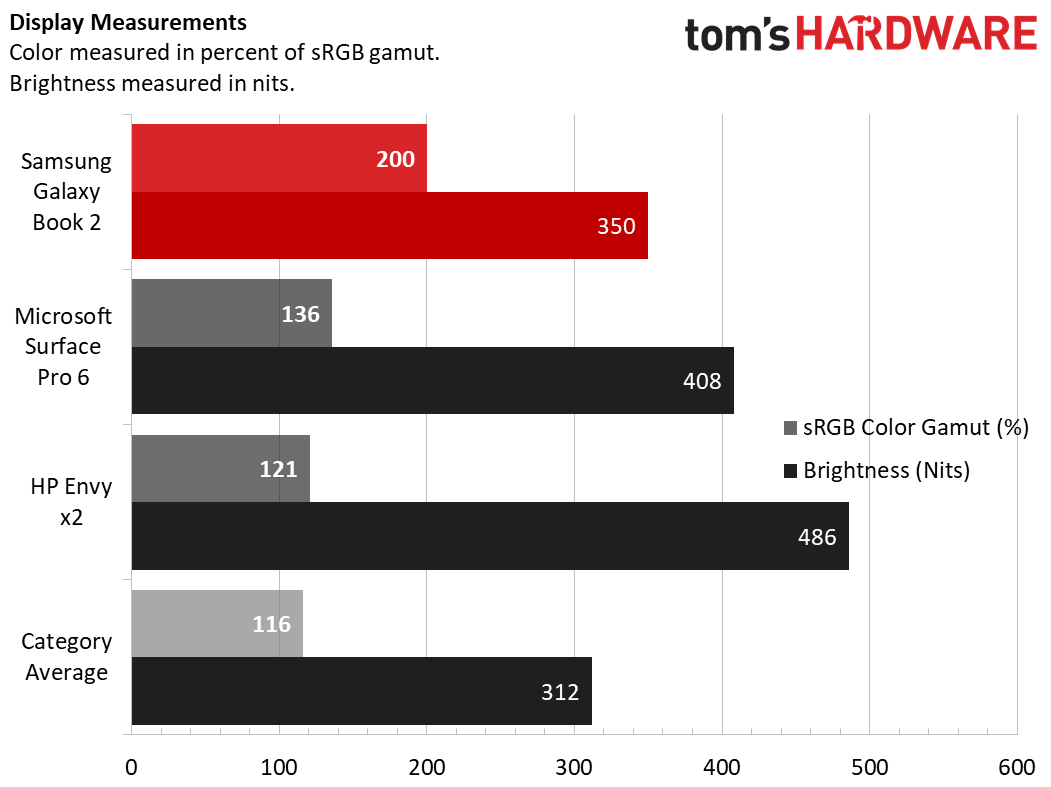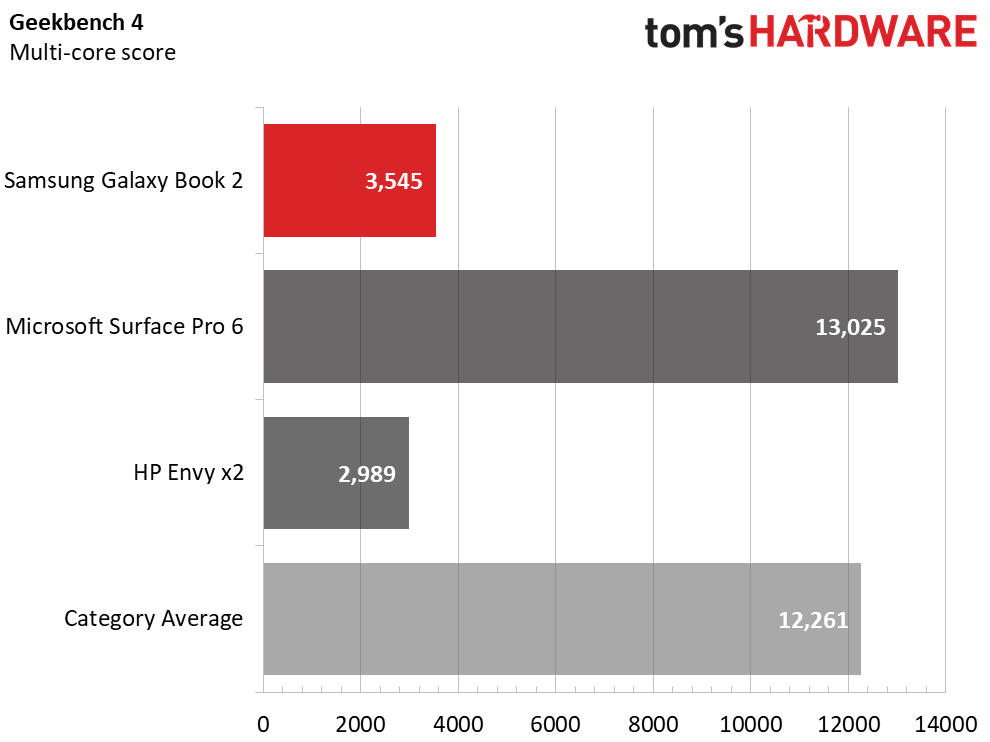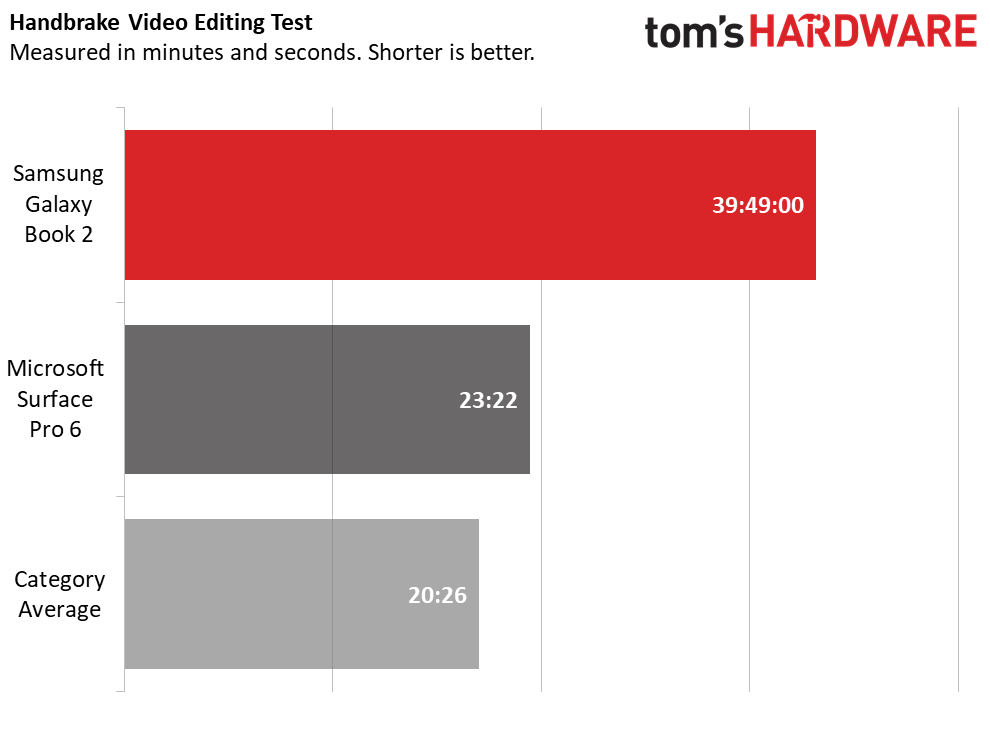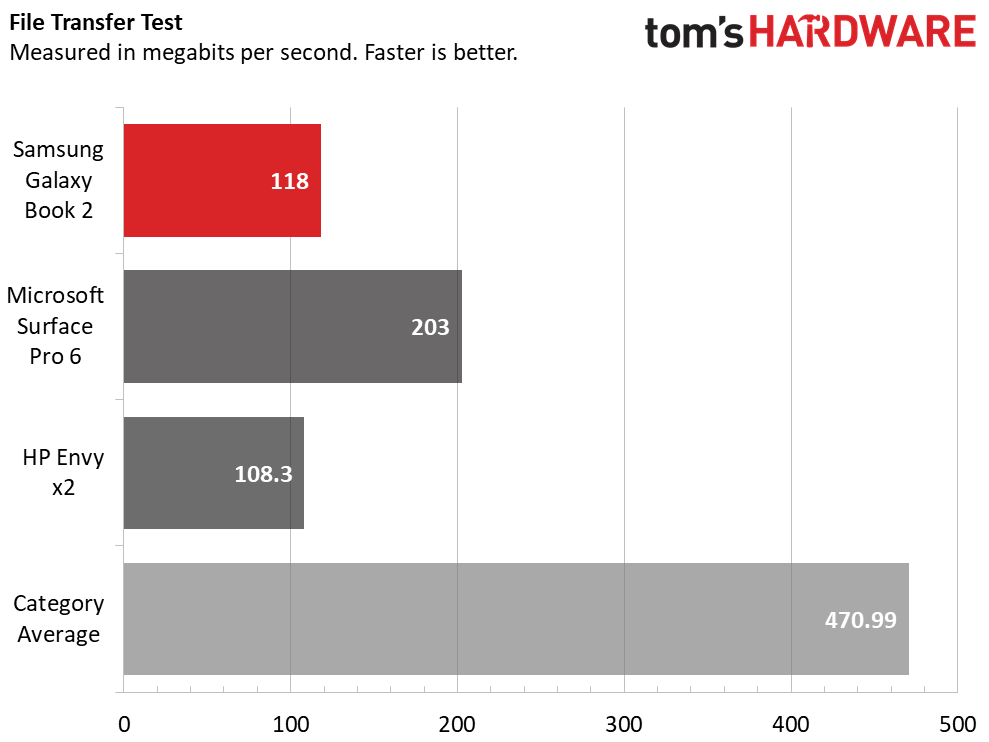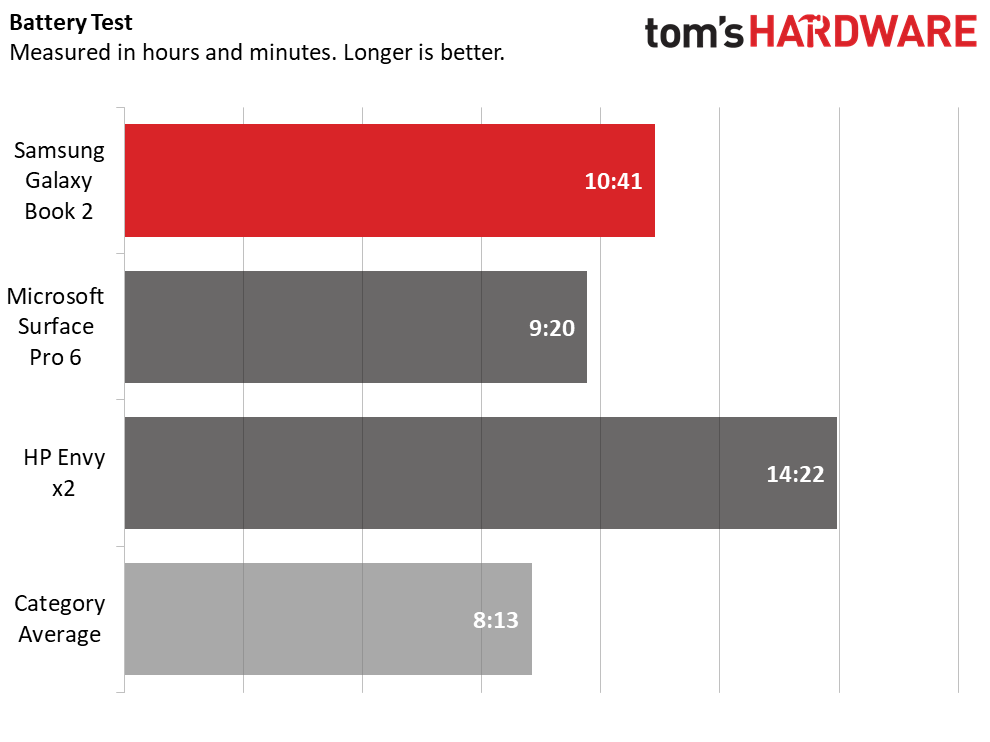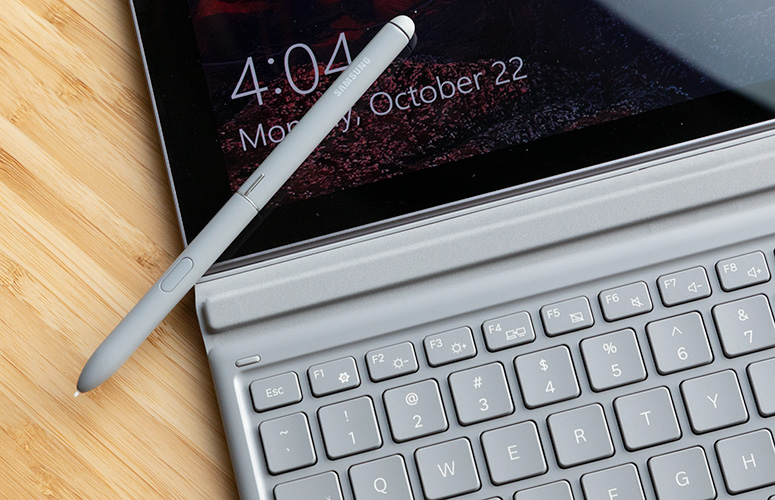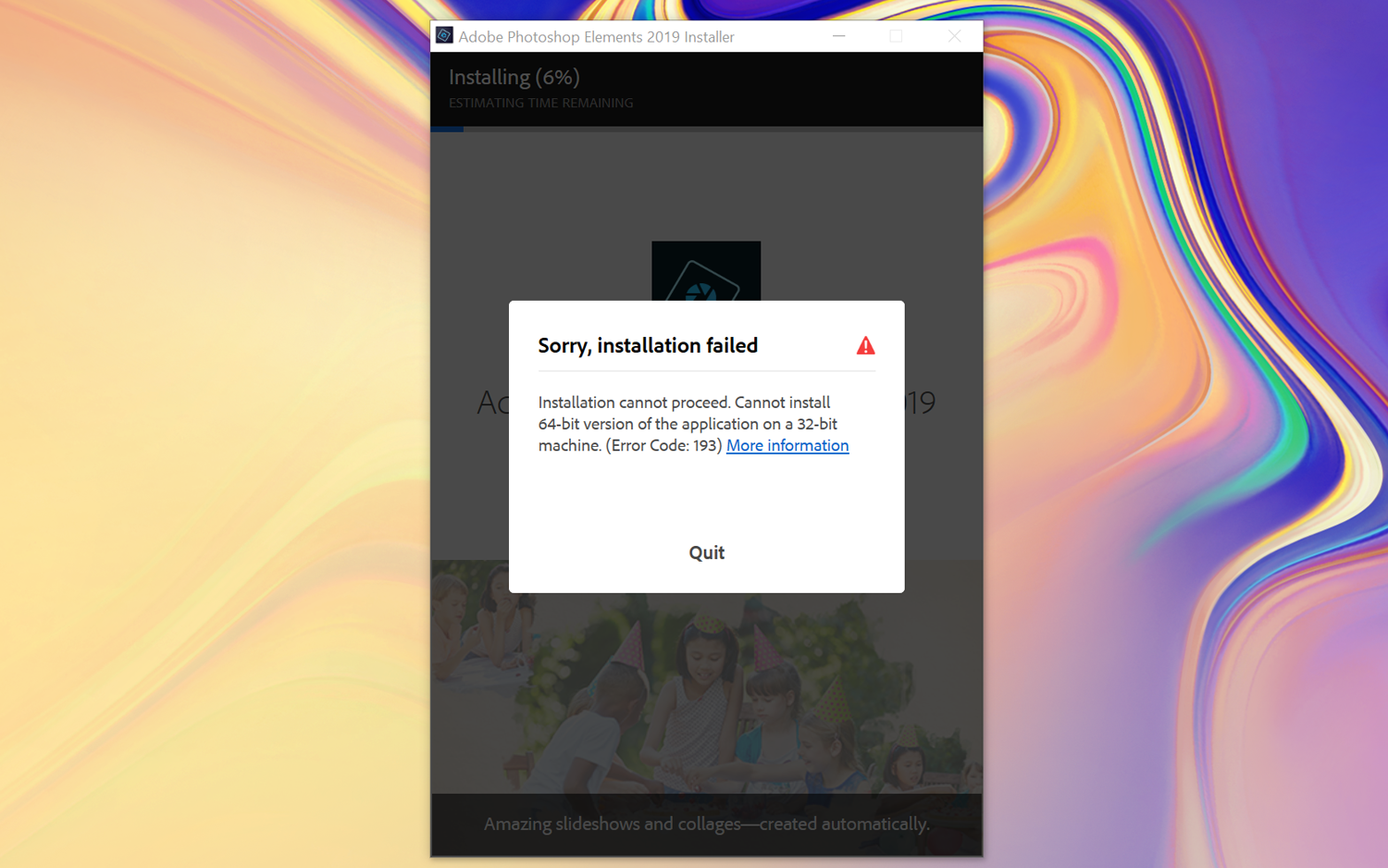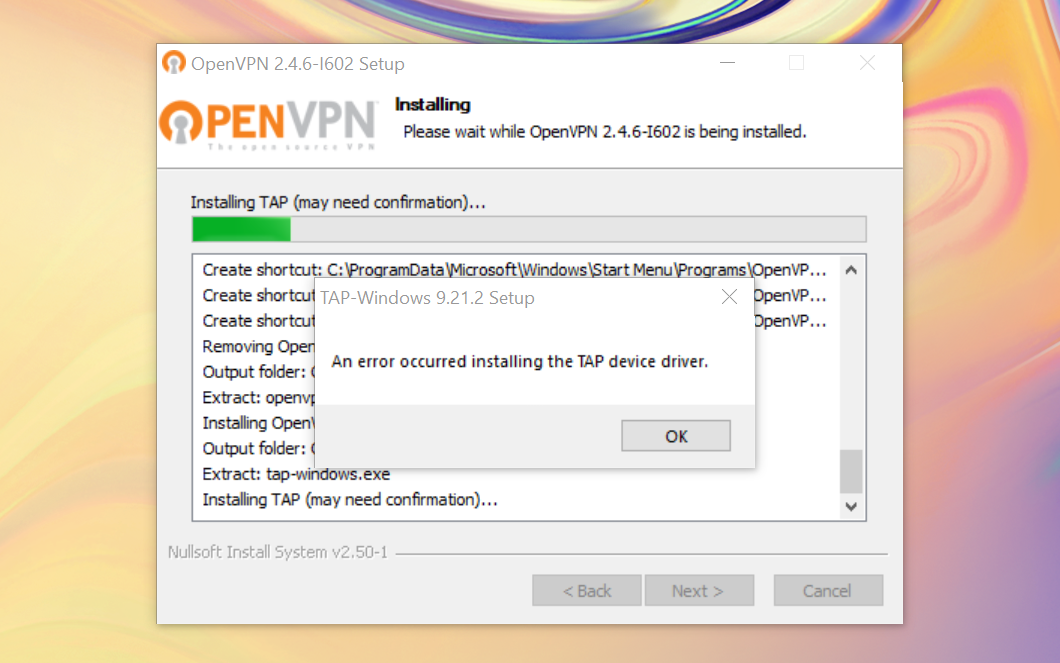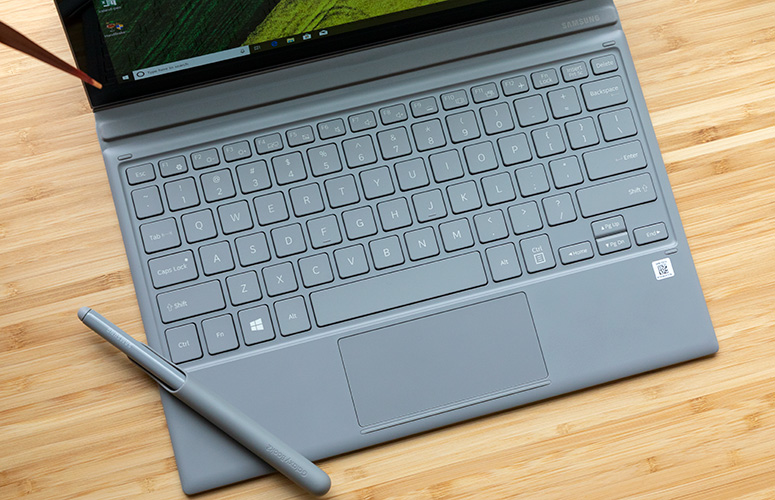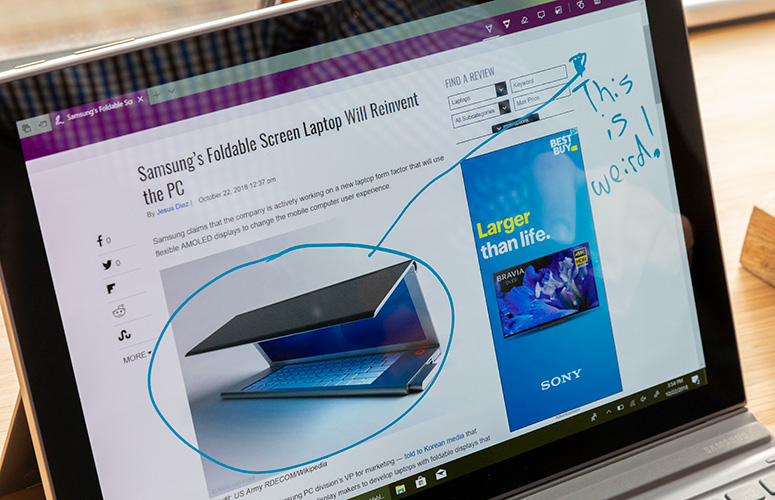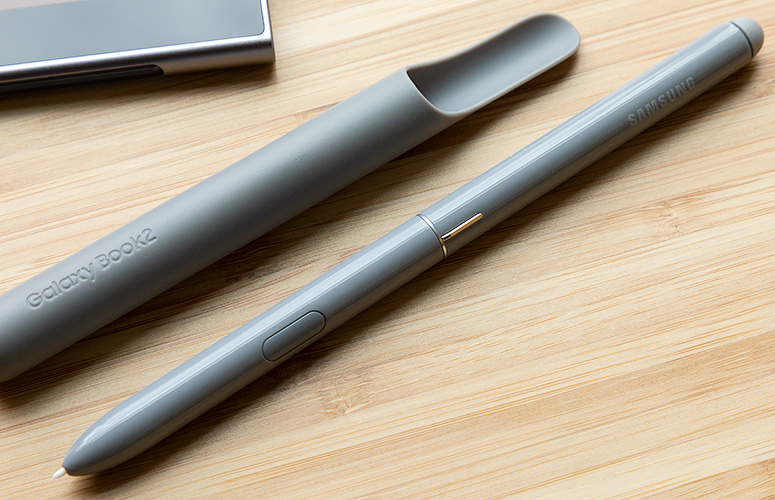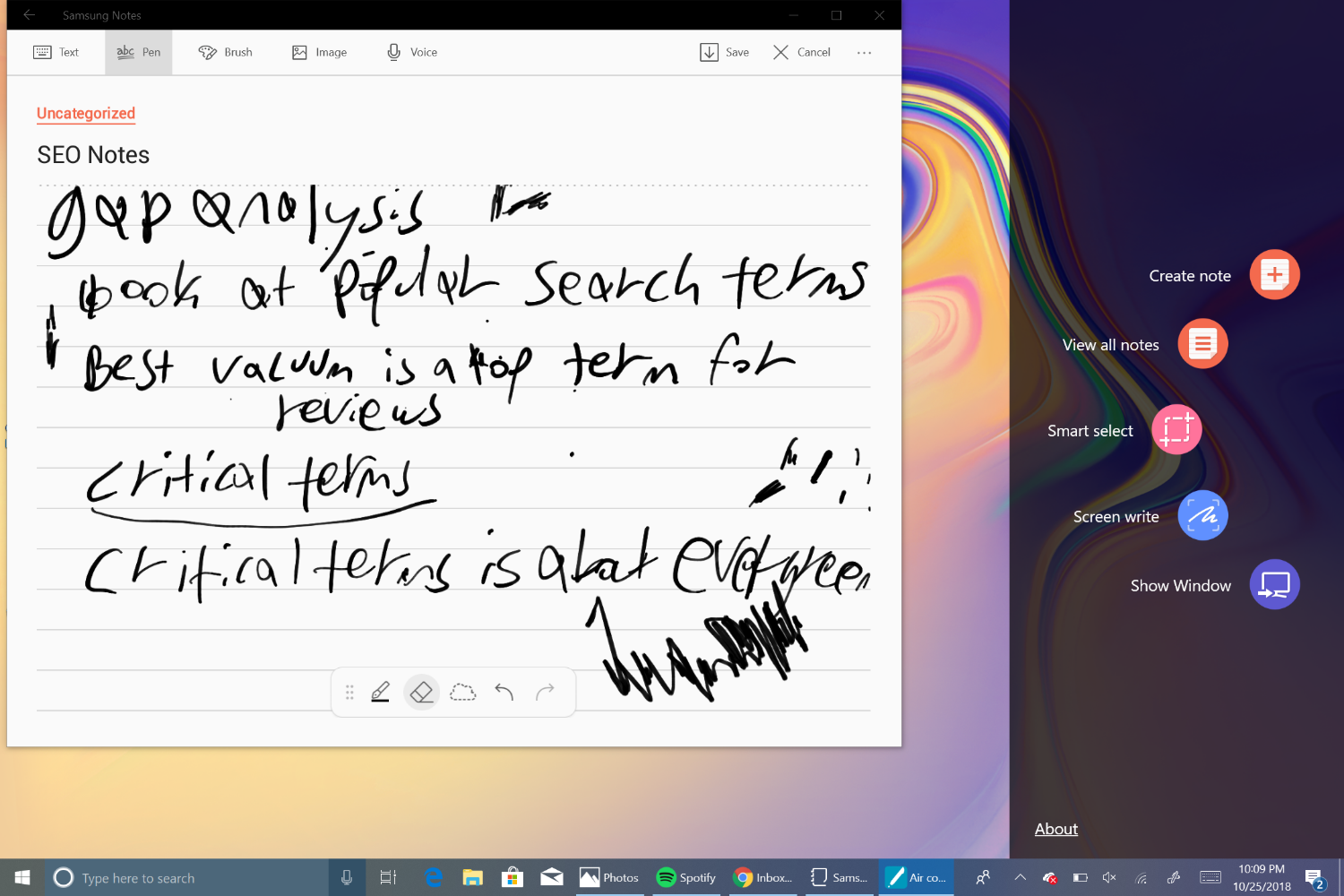Tom's Hardware Verdict
The Samsung Galaxy Book 2 proves that Windows on Snapdragon still has a long way to go, despite excellent cameras and a beautiful AMOLED screen. And it’s just too pricey to justify this kind of performance.
Pros
- +
Colorful AMOLED Screen
- +
Snappy keyboard
- +
Built-in 4G
- +
Excellent cameras
Cons
- -
Can't run 64-bit apps
- -
Mediocre performance on win32 apps
- -
Pricey for a secondary device
Why you can trust Tom's Hardware
The potential of running full Windows 10 on ARM CPUs is huge, but the early results have been mixed at best. In spring 2018, a handful of OEMs launched 2-in-1s running Windows, but powered by Qualcomm Snapdragon 835 processors rather than traditional x86 chips from Intel or AMD. These first-gen devices were intriguing but suffered from sluggish performance and annoying compatibility issues.
Now, Qualcomm has released the more-powerful, Snapdragon 850 chip and Samsung is using it to power the Galaxy Book 2, a 12-inch detachable 2-in-1 with built-in 4G, a colorful OLED display, a surprisingly-snappy keyboard and a comfortable stylus (both of which come in the box). The Book 2's performance, particularly when running standard win32 apps, is a noticeable step up from its predecessors, but $999 (UK price TBD) is a high price to pay for what is undoubtedly a secondary device.
Test Unit Specifications
| Display | 12-inch, 2160 x 1440 OLED Display |
| CPU | Qualcomm Snapdragon 850 |
| Graphics | Qualcomm Adreno 630 |
| Memory | 4GB |
| SSD | 128GB eUFS Storage |
| Networking | Snapdragon X20 LTE Modem / 802.11ac Wi-Fi |
| Ports | 2 USB Type-C, 3.5mm, microSD |
| Cameras | 8-MP rear, 5-MP front |
| OS | Windows 10 Home (S mode) |
| Dimensions (W x D x H) | 11.32 x 7.89 x .30 inches / 287.5 x 200.4 x 7.6 mm |
| Weight | 1.8 pounds (0.8 kg) / 2.4 pounds (1.1 kg) with keyboard |
| Price (as configured) | $999 (UK price TBD) |
Design
The Galaxy Book 2 has the same basic design as other detachable 2-in-1s. The 1.8-pound (0.8 kg), 11.3 x 7.9 x 0.3-inch (287.5 x 200.4 x 7.6 mm) slate connects magnetically to a 0.6-pound (0.27 kg) keyboard cover while a panel on the back flips out to serve as a kickstand. The gunmetal gray, matte metal back panel looks premium and resists fingerprints but just isn't as attractive as the Surface Pro 6 in gray or its stunning new black shade or the leather and aluminum-clad Envy x2. It’s all a step up in design from Samsung’s recent laptops that used the lightweight Metal12, which didn’t feel luxurious.
The kickstand extends back nearly 90 degrees so you can adjust the angle as you see fit. The system balanced decently on my lap, but wasn't as stable as the Surface Pro 6 because the kickstand just isn't as tight. When I used the Galaxy Book 2 on a bumpy train, it jostled uncomfortably on my lap, but never fell over.
The Galaxy Book 2 has two USB Type-C ports which can be used to charge the device, plug in to a docking station or connect to peripherals. There's also a 3.5mm audio jack for headphones, but no USB Type-A port for connecting to the most common accessories. By contrast, the Surface Pro 6 has a single Type-A port, a mini DisplayPort out and an audio jack, but no Type-C.
There's also a fingerprint reader located right next to the rear camera on the Galaxy Book 2. The sensor did a great job of recognizing my index finger and logging me in via Windows Hello.
Display
The Galaxy Book 2's 12-inch, 2160 x 1440 AMOLED screen offers incredibly vibrant colors and sharp images. When I watched a 1080p trailer for Aquaman, the blue of the water and the brown of desert sands looked particularly lush.
Get Tom's Hardware's best news and in-depth reviews, straight to your inbox.
According to our colorimeter, the Galaxy Book 2 can reproduce an impressive 200 percent of the sRGB color gamut, nearly double the premium laptop category average and way ahead of the Surface Pro and Envy x2.
At 328 nits on our light meter, the Galaxy Book 2's screen is a little brighter than the category average but dimmer than its competitors. When I put the Surface Pro 6 next to the Galaxy Book 2, Microsoft's screen was notably more luminous, which made Mera's red hair look redder. Blues were still deeper on the Samsung display.
Audio
The Galaxy Book 2's audio output was surprisingly good. When I listened to AC/DC's "Highway to Hell," the music sounded heavenly, with accurate drums, guitar and vocals. The sound was loud enough to fill my dining room and blissfully free of the tinniness we see on so many laptop and tablet speakers.
Performance
The Samsung Galaxy Book 2's Qualcomm Snapdragon 850 CPU and 4GB of RAM are capable of competently surfing the web, running office apps and note-taking, but the experience just isn't as smooth and seamless as on similarly-priced competitors like the Surface Pro 6. The problems are far worse when you multitask or use an app like Google Chrome, which is not a Microsoft Store app.
When I opened over a dozen tabs in Chrome and had a YouTube video window sitting side-by-side with a Google Docs tab, I noticed a lot of lag, both in editing the document and switching tabs. At a couple of points, the screen froze.
When I performed the same test with Microsoft’s Edge browser, there was still lag, but it wasn't as bad. On a Surface Pro 6, there was no lag at all and pages loaded and drew much faster.
The Galaxy Book 2 fared worse on synthetic benchmarks. Its Geekbench 4 score of 3,545 is less than a third of the premium laptop category average and even farther behind the Surface Pro 6. The HP Envy x2, which had the last-generation Qualcomm Snapdragon 835, was about 15 percent worse, so there is some definite generation-over-generation improvement here. Some would argue that tests like Geekbench, which themselves are not Microsoft Store apps, aren't fair because they are running in emulation mode, not natively. However, if you choose to use non-Store apps like Chrome, this is perfectly representative of the performance you'll get.
Don't even think about crunching video. It took the Galaxy Book 2 a glacial 39 minutes and 43 seconds to convert a 4K video to 1080p using Handbrake. That's nearly twice as long as the average premium laptop and way slower than the Surface.
The Galaxy Book 2 runs Microsoft Office well enough for use, but it's not as quickly as Intel-powered competitors. Samsung's 2-in-1 took 2 minutes and 18 seconds to match 65,000 names with their addresses in Excel, which is around 15 percent better than the HP Envy x2 but way behind the Surface Pro 6 and the average premium laptop.
Since this is a Qualcomm-powered laptop, it uses smartphone-style eUFS Flash storage instead of a typical SATA or NVMe SSD. The Samsung eUFS drive copied 4.97GB of mixed media files at a rate of 110 MBps, which is less than a quarter of the category average and half of the Surface Pro 6's rate. The Envy x2 had nearly identical transfer speeds.
If you're buying this 2-in-1, you probably weren't thinking of gaming, which is good. The Galaxy Book 2 returned an unplayable frame rate of 24 fps on Dirt 3, a low-end racing game that runs on even the cheapest hardware. By contrast, the Surface Pro 6, which has Intel integrated graphics, played a smooth 81 fps. the average premium laptop got 74 fps.
Battery Life
The Samsung Galaxy Book 2 lasted 10 hours and 41 minutes on our battery test, which involves continuous web surfing over Wi-Fi with the screen set at 150 nits. While that time compares favorably to premium laptop average, it's less than we expect from a device with an ARM processor. The Envy x2 and its Snapdragon 835 CPU lasted 14 hours and 22 minutes on the same test while the Surface Pro 6, which has a power-hungry Core i5 or Core i7 CPU, lasted for a 9 hours and 20 minutes.
Windows 10 S and Software Compatibility
Like other Qualcomm-powered Windows 2-in-1s, the Galaxy Book 2 ships with Windows 10 Home in S mode, which prevents you from installing any app that doesn't come from the Microsoft Store. It's easy to understand why Microsoft, Samsung and Qualcomm would want you to use a crippled version of the operating system. The Snapdragon chips can run any store app natively so performance is much better while, with regular win32 apps, the processor has to emulate an x86 chip, which really slows things down.
Unfortunately, there are a lot of important apps that aren't available as store apps. If you want to use a browser other than Edge, you're out of luck. If you want to do some coding with Visual Studio or Android Studio, you can't run either in Windows 10 S. You can't run my favorite code and text editor, Notepad++ in Windows 10 S either.
Fortunately, with a couple of clicks, you can switch out of S mode and into regular Windows 10 Home, which lets you install 32-bit apps. However, there are many Windows applications that are only available in a 64-bit version. Photoshop Elements, an app I use every day, does not come in 32-bit anymore and the Cinebench benchmark, which we wanted to run, is also 64-bit only.
Even among 32-bit apps, not all will work on ARM processors. I tried to use OpenVPN, a popular VPN client which I use to access some private networks, but it won't install because it tried to load a TAP driver that's not compatible with ARM. On the bright side, Google’s Chrome browser works fairly well and there is a 32-bit version of Firefox as well.
Keyboard and Touchpad
The backlit keyboard is pleasantly snappy and responsive, with a deep 1.6 mm of vertical travel and a strong 70 grams of required actuation force. Typing on a lightweight keyboard cover usually isn't as satisfying as pressing against a laptop keyboard that has some mass, but Samsung's keys felt good and enabled me to achieve a score of 95 words per minute with a meager 5 percent error rate, which is on the low end of my typical range.
The 1.7 x 3.9-inch touchpad is a little small, but highly accurate. In my tests, I was able to target icons, drag windows around and highlight text, without a hint of jumpiness or stickiness. The pad also responded instantly to multitouch gestures such as pinch-to-zoom and three-finger swipe.
Stylus and Inking
The Galaxy Book 2 comes standard with Samsung's S Pen, a 5.5-inch (14 cm) plastic stylus you can use for drawing or note-taking. Unlike Microsoft's $99 (£99) Surface Pen, the S Pen doesn't need batteries or to be charged. It works competently, but isn't one of the better stylii I've used.
The plastic tip is small enough to target narrow areas on the screen and draw thin lines, but doesn't have the same realistic pen on paper feel of the Surface Pen. I had no problem taking text notes or drawing in Samsung's preloaded Notes app and marking up screenshots in the Screen write app, but I didn't get the kind of helpful friction that I have experienced with the Surface. But, like the Surface, the back of the stylus can be used as an eraser, which is welcome for inking in Windows.
If you're going to carry the pen, keep it in a bag or a pocket. It weakly attaches to a magnet on the side of the tablet, but if you get jostled or move around too much, it will likely fall off. The stylus also comes with a sheath that protects the tip while it rolls around in your bag. It also doesn't help that the S Pen is made of cheap, glossy plastic with just a tiny metal sliver in the middle for attaching to the magnet.
In addition to Windows Ink, Microsoft's set of first-party note-taking and drawing apps, Samsung bundles its own set of useful utilities. When you press the button on the S Pen, a circular menu called "Air Command" appears in an overlay on the right side of the screen. There you can choose to create or open a document in Notes, an app that lets you take handwritten notes or draw pictures. You can crop a part of the screen and edit it (or convert images to text) with Smart Select or you can capture the entire screen mark it up in Screen Write.
While Samsung's inking apps are helpful, I wish that Notes provided an easy way to convert your scrawlings into text as you write so that you could then copy and paste them into word processors like Google Docs or Microsoft Word.
4G Connectivity
The Galaxy Book 2's built-in 4G LTE modem is a huge convenience. Our review unit came with a Verizon SIM card that gave us speeds as high as 74 Mbps down and 49 Mbps up. As with any carrier, connection quality can vary. In my house, which has poor Verizon connectivity, loading videos and web pages was sluggish and results were mixed when I used the connection on a commuter train.
However, if you buy the Book 2, you can use any SIM card you want. In the U.S., it will be sold online by AT&T, Samsung and Microsoft and at Verizon, AT&T and Sprint stores. We're still waiting to find out about UK availability and pricing.
It almost goes without saying that, if you buy a competitive product that doesn't have built-in 4G, you can use a hotspotting feature on your phone to get online. However, it's very convenient to have LTE available from the moment you boot up or wake your tablet. When you have to turn on a hotspot on your phone, provided that your plan allows it, that's an extra step and you're also eating up your handset's battery.
Cameras
Both the 8 megapixel rear camera and the 5MP front shooter capture excellent images. When I shot pictures of a park and a city street, details like the complex wood lattice of a sculpture and the painted graffiti on a truck were sharp and colorful.
The 5MP webcam is a lot better than most laptop cameras. It got the bright color of my shirt just right and captured fine details like the lines in my forehead and the hairs in my beard.
Software and Warranty
In addition to Samsung's small suite of pen apps, the company preloads Samsung Flow, which syncs files and content with your Samsung phone, allowing you to transfer live calls, documents or web pages from one device to another. Samsung Gallery is a lot like Windows 10's built-in gallery; it shows all of your on-device photos but it also allows you to sync with the images on your phone.
Dolby Atmos gives you fine control of the audio, allowing you to choose among music, movie, voice or gaming profiles. There's also the same suite of crapware that comes on every Windows 10 laptop, including Candy Crush Saga, Royal Revolt 2: Tower Defense and Drawboard PDF.
Samsung sells the Galaxy Book 2 with a one-year warranty.
Bottom Line
When evaluating the Galaxy Book 2, I keep coming back to the same question: "who is this for?" Samsung doesn't market this 2-in-1 as a secondary device, but its mediocre performance, low storage capacity and paltry 4GB of RAM make it viable only as a lightweight mobile device you can carry with you when you have a more powerful computer waiting for you at home. However, few people would pay this kind of money for a second computer, particularly one that's incompatible with some mainstream apps and sluggish when running Chrome, the world's leading browser.
For only around $125 more, you can get a Surface Pro 6 with a Core i5 CPU and 8GB of RAM ($1,124 or £1,104 with keyboard and pen), one which offers good enough performance to be your main system, along with a brighter screen, a superior stylus and a nicer design. The Surface doesn't have a built-in 4G option (yet), but you can always connect it to your phone's hotspot.
If you really do want a secondary device to compliment your powerful home PC, there are better and cheaper options such as the Surface Go ($399 or £379, $599 or £599 with pen/keyboard). The Surface Go has a 10-inch display, no 4G and shorter battery life but it has no problem running Chrome and it has Microsoft's more-premium design.
The Galaxy Book 2 has several positives, including a gorgeous screen, a snappy keyboard, built-in 4G, good sound and great cameras. It's also a noticeable step up from first-gen Qualcomm-powered laptops like the HP Envy x2. However, consumers don't grade products on a curve. Unless the price drops significantly lower, the Galaxy Book 2 just isn't worth the money.
MORE: Best Gaming Laptops
MORE: Gaming Laptop Previews
MORE: All Laptop Content
Avram Piltch is Managing Editor: Special Projects. When he's not playing with the latest gadgets at work or putting on VR helmets at trade shows, you'll find him rooting his phone, taking apart his PC, or coding plugins. With his technical knowledge and passion for testing, Avram developed many real-world benchmarks, including our laptop battery test.
